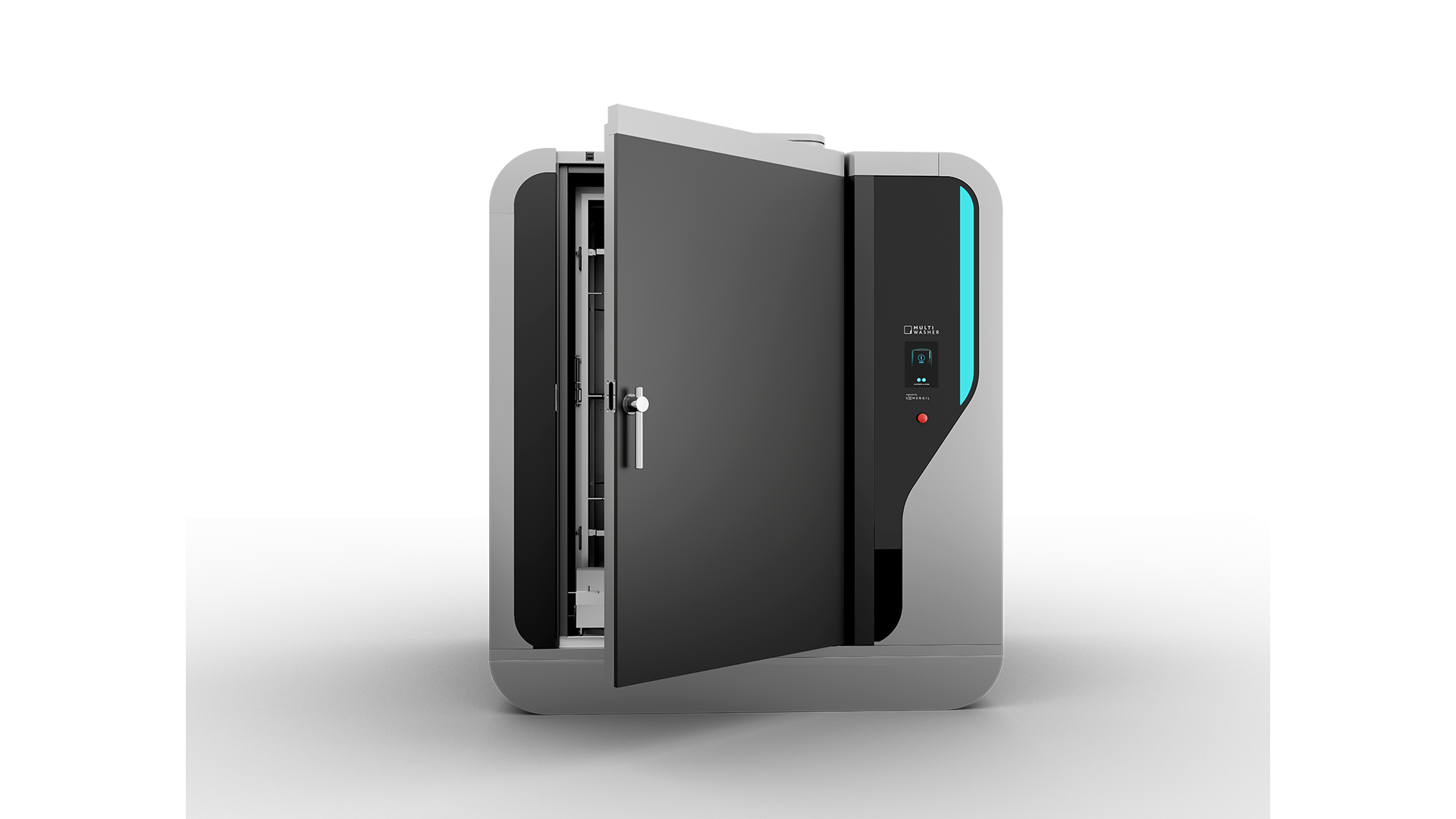Industrial washing / Articles
Resource management: what is it and how to do it right
Learn how efficient resource management can enhance productivity, reduce costs, promote sustainability, and avoid unforeseen hiccups.

 9 minutes of reading
9 minutes of reading
2024-04-23 12:46:59
Imagine yourself marooned on a remote island. If given the opportunity, what three items would you choose to have with you? By making this selection, you have engaged in a rudimentary form of resource management. In this scenario, your goal is clear – to survive – and you must strategically allocate limited resources to achieve this objective.
However, in the realm of business, resource management entails a more complex selection process. It requires a comprehensive grasp of organizational objectives and capabilities, as well as transparency in decision-making. By instituting a robust resource management planning framework, businesses can optimize efficiency and oversee the allocation of resources to various endeavours. In this article, we shed light on how effective resource management can unlock untapped potential, drive innovation, and propel organizations towards their strategic objectives.
What is resource management?
Resource management is the process of allocating available resources to achieve organizational objectives. These resources can include human resources (employees), financial resources, physical resources (equipment, facilities), and intangible resources (knowledge, technology).
It also involves strategic planning, coordination, and optimization of key resources to maximize productivity, minimize waste, and achieve desired outcomes. It encompasses various activities such as resource planning, allocation, monitoring, and optimization, all aimed at ensuring that resources are utilized in the most effective and sustainable manner to support the organization’s goals and objectives.
Resource management: is it really important?
The importance of resource management cannot be overstated. No matter the industry, no matter the business, efficient allocation and utilization of resources are essential for ensuring the long-term sustainability and competitiveness. Several key reasons underscore the significance of effective resource management:
1. Cost efficiency
Efficient resource management is paramount for controlling operational costs. By optimizing resource usage, such as water and energy, companies can significantly reduce their utility bills and overall operating expenses. This cost-saving aspect is particularly crucial for businesses seeking to improve their profitability.
2. Improved productivity
Effective resource management enables companies to enhance their operational efficiency and productivity. This improved productivity increases output and enhances the overall competitiveness of their businesses in the market.
3. Environmental responsibility
Every company can prove their commitment to environmental sustainability through responsible resource management practices. By minimizing water and energy consumption, reducing waste generation, and adopting eco-friendly materials, businesses can lessen their environmental impact and contribute to a greener future. This eco-conscious approach aligns with regulatory requirements and improves their own reputation as environmentally responsible organizations, thereby enhancing their Environmental, Social and Governance (ESG) standards.
4. Long-term viability
Implementing effective resource management strategies ensures the long-term viability and resilience of every business. By conserving resources and adopting sustainable practices, you can future-proof your operations against resource shortages, price fluctuations, and regulatory changes. This proactive approach fosters business continuity and positions every company as an industry leader committed to sustainability and responsible stewardship.
Resource management techniques
These are the main resource management techniques that play a pivotal role in the success of any organization.
1. Resource allocation
Resource allocation is the process of assigning available resources to specific tasks, projects, or activities based on their priority and requirements. This technique involves identifying the resources needed for each project, determining their availability, and distributing them effectively to ensure that project objectives are met within the allocated budget and timeframe. Key considerations in resource allocation include prioritizing projects based on strategic objectives, balancing resource demands across multiple projects, and optimizing resource utilization to maximize productivity and minimize conflicts.
2. Resource utilization
Resource utilization refers to the efficient use of available resources to achieve desired outcomes. This technique involves monitoring and tracking resource usage throughout the project lifecycle to ensure that resources are utilized optimally and effectively. By analysing resource utilization metrics such as utilization rates, capacity utilization, and resource workload, organizations can identify underutilized resources, reallocate them to high-priority tasks, and prevent overallocation or burnout, while also integrating principles of the circular economy to enhance efficiency and sustainability.
3. Resource levelling
Resource levelling is a technique used to smooth out fluctuations in resource demand over time to avoid peaks and valleys. This technique involves redistributing tasks or adjusting project schedules to balance resource demand and capacity, preventing resource bottlenecks and overutilization. Resource levelling’s goal is to achieve a more consistent workload for resources, minimize idle time, and optimize resource utilization across projects.
4. Resource forecasting
Resource forecasting involves predicting resource needs and requirements based on historical data, project plans, and anticipated changes in demand. It enables organizations to plan and allocate resources to meet future project requirements and business objectives. Resource forecasting typically involves analysing past resource usage patterns, considering upcoming projects and initiatives, and factoring in external factors such as market trends and regulatory changes. By accurately forecasting resource needs, organizations can ensure that they have the right resources in place at the right time.
Top 6 strategies for resource management
There is no need for large investments and a radical shift in processes and culture to improve resource management. With these 6 strategies for resource management, you can reap some benefits nearly immediately.
1. Inventory optimization
Implement just-in-time inventory management practices to minimize excess inventory and reduce storage costs. Utilize stock management systems and demand forecasting tools to maintain optimal stock levels and avoid stockouts.
2. Energy efficiency
Invest in energy-efficient technologies and equipment to reduce energy consumption and lower utility bills. Implement energy-saving measures such as LED lighting, HVAC system upgrades, and motion sensors to minimize waste and maximize efficiency.
3. Water conservation
Implement water-saving measures such as low-flow fixtures, high-pressure nozzles and automated shut-off valves on processing equipment. Also, repair leaks promptly and recycle water where feasible. Utilize water-efficient technologies and practices in manufacturing processes to minimize water usage and environmental impact.
4. Waste reduction and recycling
Implement waste reduction strategies such as source reduction, reuse, and recycling to minimize waste generation and disposal costs. Identify opportunities to recycle materials and repurpose waste streams, reducing landfill usage and conserving resources.
5. Process optimization
Streamline processes and workflows to improve efficiency and productivity. Implement lean manufacturing principles, standardize operating procedures, and utilize automation technologies to optimize resource utilization and reduce waste.
6. Supplier collaboration
Collaborate with suppliers to identify opportunities for resource optimization throughout the supply chain. Establish sustainability criteria for selecting suppliers and encourage them to adopt environmentally friendly practices such as reducing packaging waste and optimizing transportation routes.
MultiWasher, the ultimate technology for resource management
MultiWasher represents a cutting-edge advancement in resource management technology, revolutionizing efficiency and sustainability in industrial washing machine operations.
With its state-of-the-art design and intelligent features, this machine sets new standards in efficiency, sustainability, and performance. At the heart of its innovation lies an unparalleled ability to optimize resource utilization, conserving energy, water, and detergent while delivering impeccable washing results.
Moreover, its intelligent algorithms and sensors adapt washing cycles based on load size and soil levels, ensuring optimal resource usage without compromising on cleanliness. What’s more, MultiWasher’s innovative design ensures that items emerge from the wash cycle dry and ready for immediate use, eliminating the need for additional drying processes and further reducing resource consumption.
In essence, MultiWasher isn’t just an industrial washing machine; it’s a strategic investment in resource management excellence. Get in touch and find out for yourself how MultiWasher can help you achieve unparalleled levels of efficiency, sustainability, and performance.
You may also like

Industrial washing / Articles
Drying systems: what are they and how to choose one
Discover the real impact of drying systems in your everyday operations and know how to pick one.
Posted in 2024-12-13

Industrial washing / Articles
IBA 2023: 3 of baking hottest trends
We were in Munich for IBA 2023, one of the biggest international baking and confectionery fairs. Find out what’s new.
Posted in 2024-01-03

Industrial washing / Articles
The all-new Multiwasher Healthtech, live at HostMilano
We are proud to present our brand-new washing equipment for the healthcare sector at HostMilano international convention. This is the Multiwasher...
Posted in 2021-10-22






















 Portugal
Portugal United Kingdom
United Kingdom United States
United States France
France Spain
Spain Germany
Germany Romania
Romania Italy
Italy Czech Republic
Czech Republic Finland
Finland Hungary
Hungary Slovakia
Slovakia Greece
Greece Lithuania
Lithuania South Korea
South Korea Russia
Russia Saudi Arabia
Saudi Arabia Poland
Poland Brasil
Brasil Hebrew
Hebrew